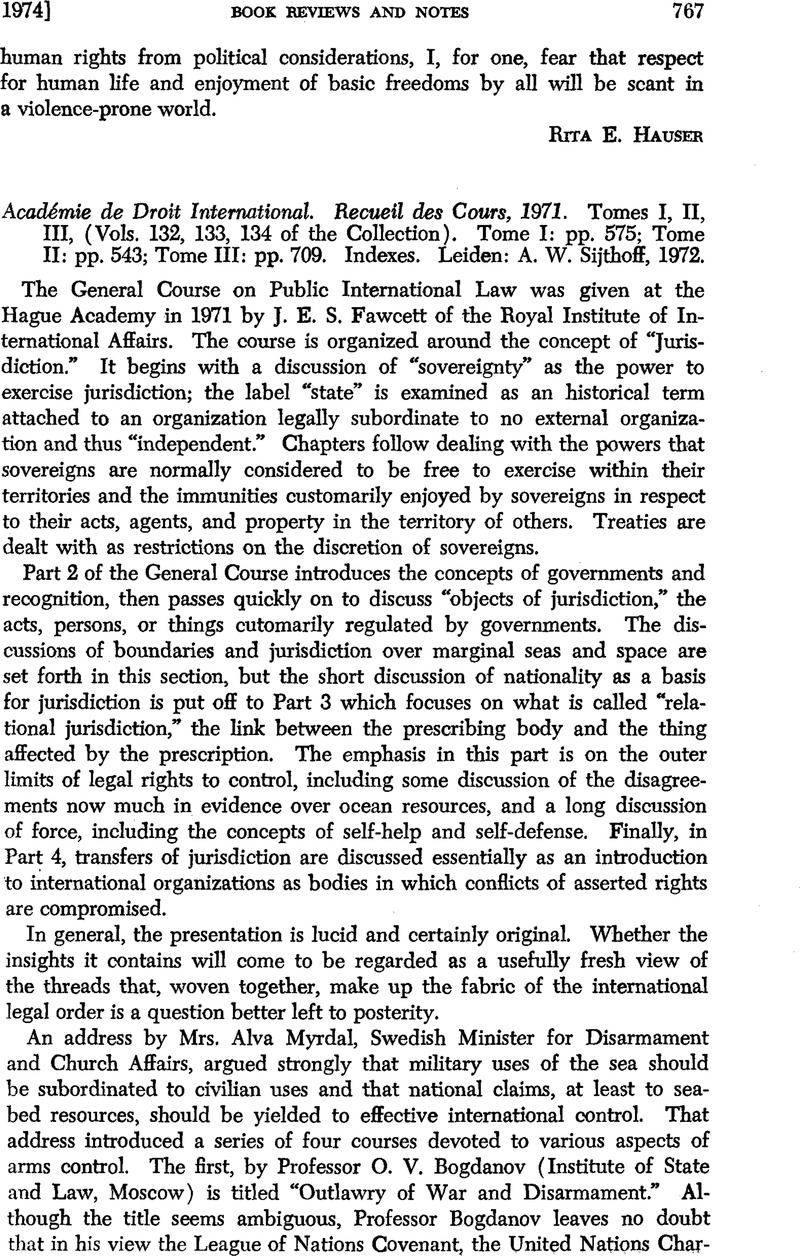No CrossRef data available.
Published online by Cambridge University Press: 28 March 2017

1 Non-Proliferation Treaty of July 1, 1968 TIAS 6839, 21 UST 483 and the inspection arrangements of the Internatoinal Atomic Energy Agency TIAS 3873, 8 UST 1093 are not mentioned by Dr. Garcia Robles.
2 Whether “sovereign equality” is a “general principle of law” within the contemplation of Article 38(1)(c) of the Statute of the International Court of Justice, as asserted by Professor Stein, is at least debatable. The point is peripheral to Professor Stein’s argument and one might merely note that the meaning of the phrase in the UN Charter would seem more a matter of treaty interpretation under Article 38(1)(a), and that to the extent states customarily respect rights of other entities which the consensus labels “states,” the phrase seems shorthand for a norm of customary law within the sense of Article 38(1) (b) of the Court’s Statute.
3 94 LNTS 65.